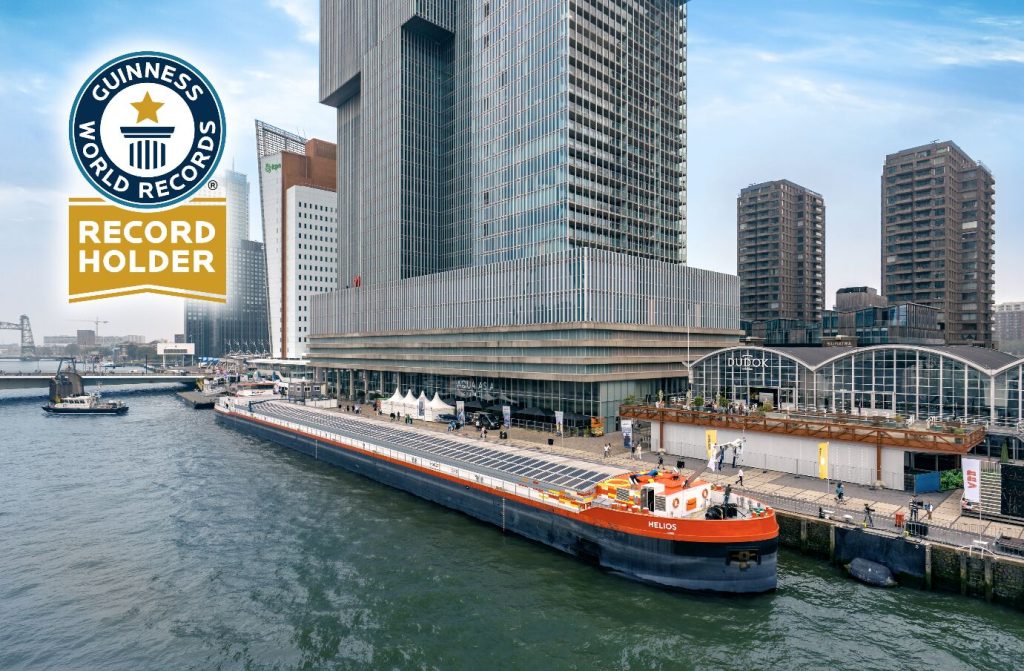As industries increasingly focus on sustainability, companies seek ways to reduce their carbon footprints without compromising efficiency. One development in this area is the adoption of solar power technology. Another is a modal shift, where companies shift freight volumes to modes of transportation other than road freight. Inland shipping is one of those modes, but adoption is slow, while it is a cost-effective and relatively sustainable way of moving large quantities of goods.
Wattlab, a company dedicated to making the maritime industry greener through its cutting-edge solar hatches, gives companies an even stronger reason to use inland shipping. Their solution lowers the carbon footprint of vessels by covering their hatches with solar panels. The results speak for themselves. Ships fully covered with solar hatches use up to 93% less generator runtime, up to 73% less generator fuel consumption, and a reduction of up to 75% in days needing shore power.
The Challenge: Emissions in Inland Shipping
Inland vessels move a substantial amount of goods across regions, contributing to a significant portion of greenhouse gas emissions. Traditional propulsion methods in the maritime sector heavily rely on fossil fuels, making this sector a prime target for sustainability innovations. Reducing emissions in inland shipping isn’t just an environmental issue; it also makes economic sense as fuel prices fluctuate and regulations around emissions tighten.
Wattlab’s Solar Hatches: A Game-Changing Innovation
Wattlab, a Dutch clean-tech company, has developed an innovative solution to tackle this problem: solar-powered hatches. In collaboration with Blommaert, Wattlab has designed solar hatches that integrate solar panels into the aluminium structures on inland vessels. These hatches replace conventional metal with lightweight, durable solar ones, allowing ships to harness renewable energy while en route or docked.
The energy generated by these panels can be used to power various onboard systems, including refrigeration units, navigation tools, and communication equipment. This significantly reduces the reliance on diesel-powered generators, another step towards zero-emission shipping.
Key Features of Wattlab’s Solar Hatches
- Seamless Integration: These solar hatches are designed to be easily retrofitted onto existing vessels or incorporated into new builds.
- Lightweight and Durable: The hatches are made from aluminium with integrated solar panels, ensuring that they don’t add unnecessary weight to the vessels while offering long-lasting performance.
- Real-Time Data: Wattlab’s system allows operators to monitor energy production and consumption in real-time, offering actionable insights to optimize power usage.
- Energy Efficiency: By generating renewable energy directly on the ship, Wattlab’s solar hatches significantly reduce fossil fuel consumption, helping operators save on fuel costs and reduce emissions.
- Longevity and Maintenance: With a lifespan of over 15 years, the panels are built to last, providing consistent energy production and requiring minimal maintenance.
Sustainability in the Supply Chain: A Broader Impact
Introducing solar hatches in inland shipping is part of a more significant movement toward sustainable practices in the industry. Other innovations involve alternative fuels and fully electric ships, both battery-electric and hydrogen-powered. By adopting clean energy solutions, shipping companies can reduce their carbon footprint and contribute to the global effort to mitigate climate change.
While the initial investment in solar technology may seem significant, the long-term fuel cost savings, lower maintenance costs, and potential tax incentives make this a worthwhile investment for shipping companies looking to improve their environmental and economic performance.
The Guinness Book of Records
Blommaert and Wattlab equipped the MS Helios with 26 solar Frisian hatch covers, which resulted in 312 integrated solar panels, generating an impressive total capacity of 117 kWp. This system can generate approximately 94.000 kWh annually, more than enough to meet nearly all the onboard power needs, excluding propulsion. They are now an official Guinness World Record Holder for the most solar panels installed on an inland ship.

Image credit: Wattlab on LinkedIn
Header image: Wattlab






